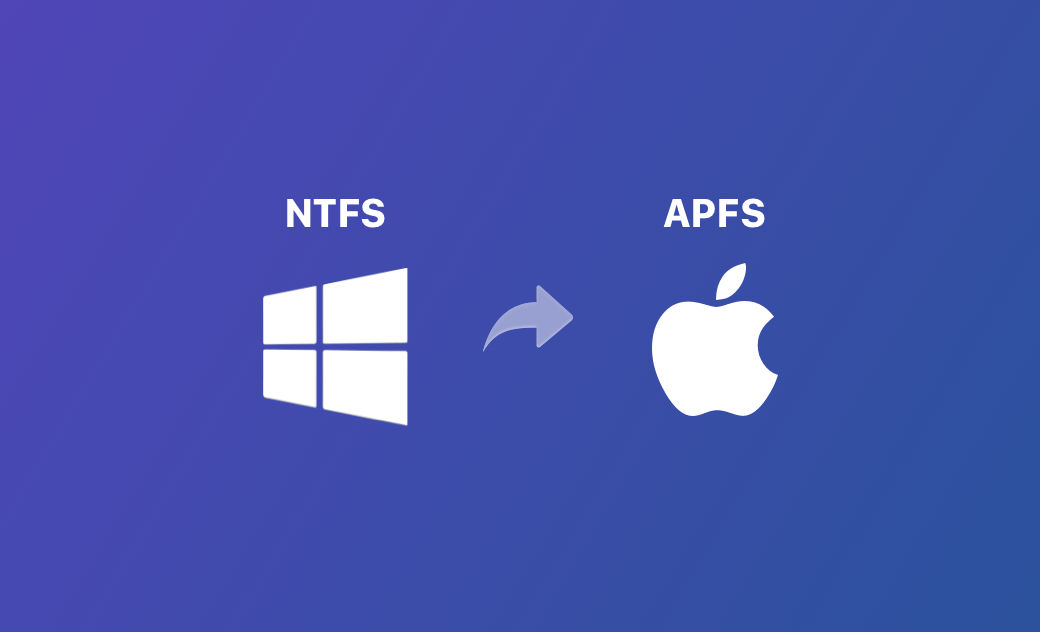How to Convert NTFS to APFS without Losing Data – 2 Steps
Why can’t copy or write files to NTFS drives on Mac?
If you connect an NTFS drive to your Mac computer, you may find that you can’t copy, edit, add, or delete files on the NTFS drive. This is because macOS only support reading the NTFS-formatted drives but not writing to them. Is it possible to convert NTFS to APFS without losing data? You can check the detailed explanation below.
How to Convert NTFS to APFS on Mac – 2 Steps
NTFS is the default file system format for Windows while APFS is the default file system format for Mac. There is no direct way to convert NTFS to APFS format, but you have a roundabout way.
Step 1. Use a Third-party NTFS for Mac Tool
To easily copy files between an NTFS drive and Mac or write files to the NTFS drive on your Mac, you can use a third-party NTFS for Mac tool.
BuhoNTFS is an easy-to-use NTFS for Mac software program. This tool helps you freely add, delete, edit, copy, rename, and write files on the NTFS drive from your Mac. In this way, you can smoothly use the NTFS drive on your Mac without formatting.
- Download and install BuhoNTFS on your Mac for free. Launch it.
- Connect the NTFS drive to your Mac. Select the NTFS drive from the left panel in BuhoNTFS.
- Tick "Allow Read & Write permission" to change the NTFS disk to read and write status.
If you really want to convert NTFS to APFS format, you can use the Mac NTFS tool to copy all files from the NTFS drive to a location on your Mac. You can also connect the NTFS drive to a Windows computer and copy its data to your PC or another hard drive. Then continue to check Step 2 to format the NTFS drive to APFS.
Step 2. Format the NTFS Drive to APFS on Mac
The easy way to change the NTFS drive to APFS format is to format the drive to APFS with Disk Utility. This process will erase all data on the drive, so you need to copy all needed data in the NTFS drive to another device before you format it. Check the steps below.
- Connect the external NTFS drive to your Mac computer. Search for and open Mac Disk Utility via Spotlight Search.
- Click View > Show All Devices if you don’t see the external NTFS drive in Disk Utility.
- Select the target NTFS drive from the left panel. Click the Erase button at the top.
- Enter a name for the volume. Choose APFS next to Format. Choose GUID Partition Map next to Scheme.
- Click the Erase button to start formatting the NTFS drive to APFS format. When the process is finished, you can open and use the APFS drive on your Mac with no hassle.
Related: How to Format a USB Flash Drive on Mac or Windows 10/11 PC
How to Read/Write Files on APFS Drives on PC
Still, you can’t read and write APFS drives on your Windows 10/11 computer without using a third-party APFS for Windows software program. You can try tools like Paragon APFS for Windows, MacDrive APFS, UFS Explorer, etc.
Alternatively, you can convert the APFS drive to exFAT or FAT32 format with Disk Utility on your Mac. exFAT and FAT32 formats are supported by both Mac and Windows systems.
Bonus: Convert HFS+ to APFS with Disk Utility
You can use Disk Utility to easily convert HFS+ to APFS if you want. Check the steps below.
- Click Spotlight Search on your Mac, type disk utility in the search box, and select the Disk Utility app to open it.
- Right-click the target HFS+ drive from the left panel and select Convert to APFS to convert the HFS+ drive to APFS format.
Bottom Line
This post mainly introduces how to convert NTFS to APFS so that you can easily read and write files on the NTFS drives on your Mac. If you need an easy-to-use Mac cleaner tool to manage and optimize the disk space of your Mac, you can try BuhoCleaner.
Cassie has been writing about technology for her entire career life - over 5 years. She enjoys diving into how Apple products work and then breaking it down in a way anyone can understand.
